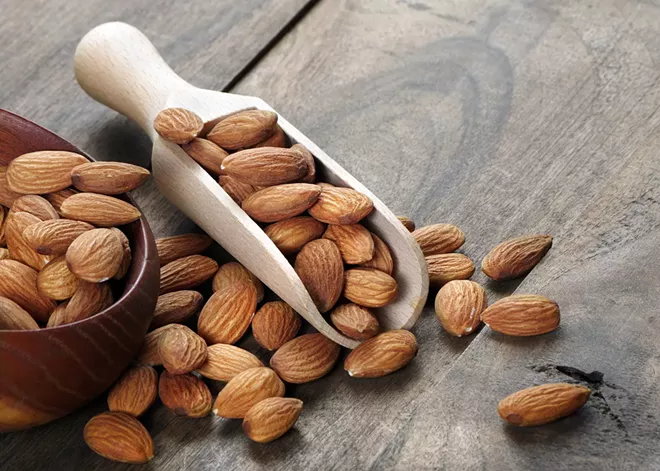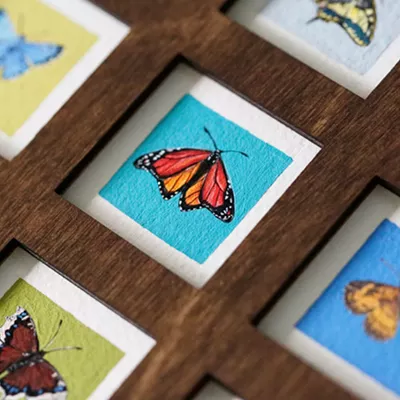My current favorite dessert is a date stuffed with dark chocolate and an almond, paired with an after-lunch shot of espresso and a view of the Spokane River. It's reminiscent of the siesta I celebrated as an au pair in Austria, when the Italian mother and I would put her kids down to nap, break out the mocha pot and sweets, and sunbathe on her Alpine patio. I don't tan like she does, but the glass windows at the office block UV rays, anyway.
If you've read Kate Lebo's The Book of Difficult Fruit, you know that almonds contain cyanide. (You'd also know this if you've read Jared Diamond's Guns, Germs, and Steel or the opening scene of Love in the Time of Cholera by Gabriel García Márquez.) Bitter almonds taste bitter because of high levels of amygdalin. When eaten, amygdalin breaks down into hydrocyanic acid. Hydro, as in water, and cyanic, as in cyanide.
Historically, their bitter taste protected almonds from being eaten. But a few thousand years ago, for some unbeknownst reason, a genetic mutation stopped a tree from producing so much amygdalin. The almonds were sweeter and far less dangerous. Now they're all over California.
Sweet almonds do still contain trace amounts of amygdalin. But according to my amateur calculations, a 160-pound adult would have to eat 1,150 sweet almonds in a day to ingest a lethal dose of cyanide. That's about 3 pounds of almonds, or about 8,050 calories — three to four times the recommended number of daily calories for an adult.
Today, I packed six dates, four squares of dark chocolate, and about 15 almonds. So I feel fine about my midday snack.
But I'm still ingesting cyanide. Am I technically poisoning myself for the sake of a "healthier" dessert?
I think of another sun-filled afternoon, this time outside on a patio on Washington State University's Spokane campus in July 2022. I'm interviewing Pablo Monsivais, a nutrition professor and public health expert, about food security in the city. It's hot and I'm nervous and the sun is really bright on the white concrete, but Monsivais is calm and cool, generous with his time, wiry and athletic, an international researcher who rejects prestige and judgment and encourages inclusion instead.
Monsivais gives insightful answers to my basic questions. His graciousness emboldens me to ask a final, somewhat irrelevant question, mostly out of personal curiosity and desperation to make it in this career.
"What do food reporters usually get wrong?"
He trots out a tried and true public health mantra, though it's often forgotten by experts and lay people alike. "The dose is the poison," he says, nodding for emphasis.
The dose is the poison. In other words, it's not necessarily the substance that will harm you, but how much of that substance, to whom and how fast.
The phrase is anti-alarmist, just like Monsivais. Too much of a "good" thing, too much of a "bad" thing — the rub is in the "too much," not just in the thing itself.
In food writing, it's easier to villainize carbs or demonize "poisons," whether they be sugar, fat or cyanide. But good food writing, like good writing in general, searches for that most elusive human virtue: wisdom.
Wisdom means considering that both sides of a contradiction can be true (almonds are great for you, and they could also kill you) and understanding that different situations call for different courses of action (if you're allergic to almonds, please don't eat any almonds).
This is not a PSA to stop eating almonds. This is an impassioned plea to eat a reasonable amount of almonds (hopefully less than a thousand) and practice holding truths in tension. The dose is the poison.
Maybe life is just a long flirtation with death, as we constantly try to find the right doses of water, exercise, sugar, caffeine and sunshine. Maybe we're all slowly eating and drinking ourselves to death. But I'll never blame carbs. And I'm definitely not giving up my dessert, that deliciously dark combo of chocolate, coffee and cyanide.



















